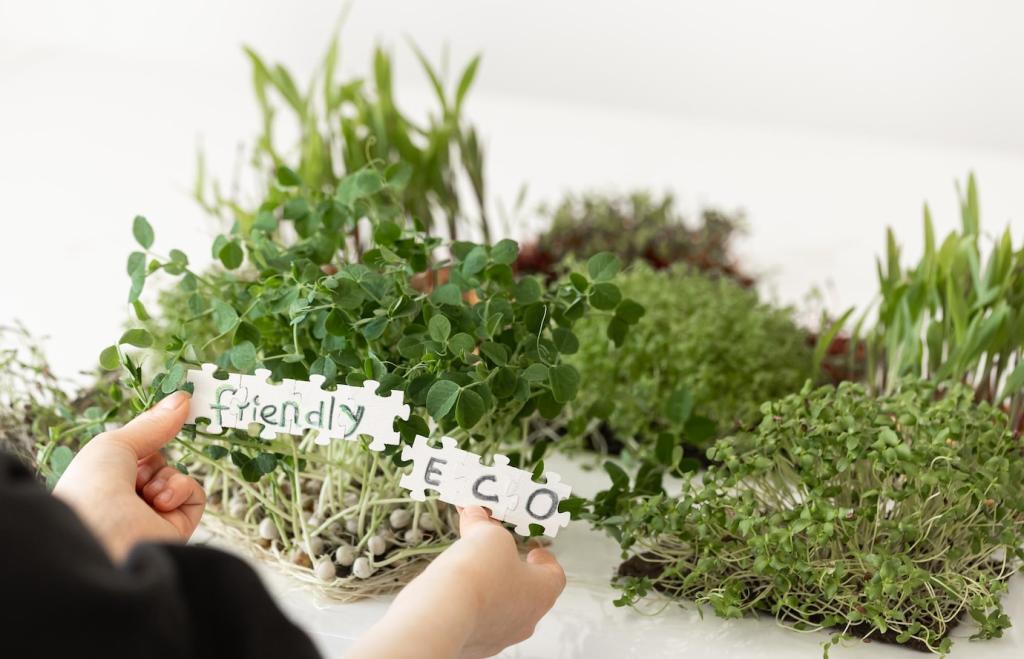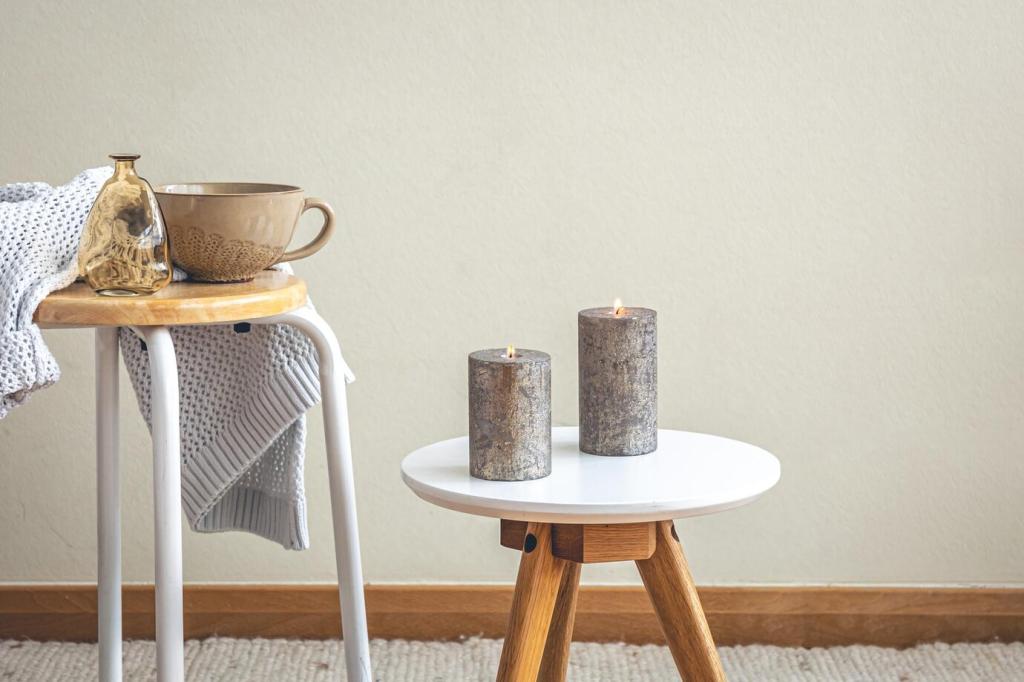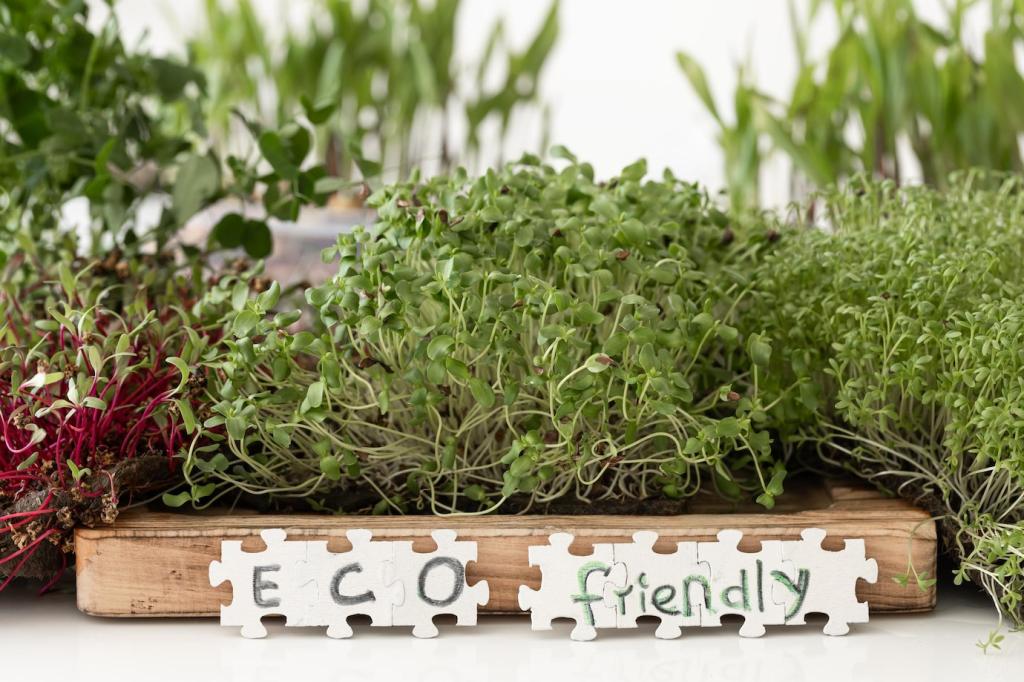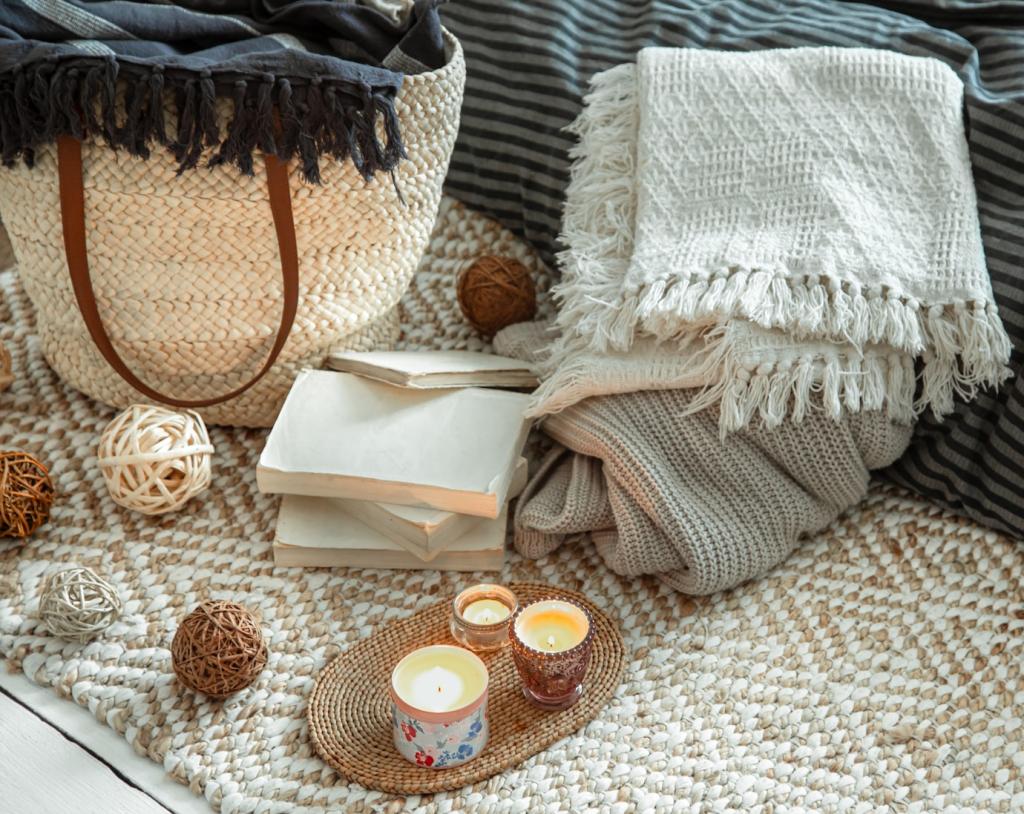
Eco-Friendly Materials for Interior Design
Discover how eco-friendly materials can transform your interior spaces into healthy, sustainable, and stylish environments. Embracing green design principles is essential for minimizing environmental impact while creating homes and workplaces that are both beautiful and functional. This guide explores key sustainable materials and practices that are shaping the future of interior design.
Sustainable Wood and Bamboo
Responsibly Harvested Hardwood
Hardwoods such as oak, maple, and walnut are prized for their durability and timeless appeal. Responsibly harvested wood carries certifications like FSC (Forest Stewardship Council), guaranteeing that it was sourced from forests managed for long-term ecological health. Choosing such materials helps reduce deforestation, protect wildlife habitats, and support sustainable livelihoods. Designers and homeowners can enjoy the beauty and longevity of hardwood flooring, paneling, or cabinetry while minimizing their environmental impact.
Bamboo: The Fast-Growing Alternative
Bamboo is one of the most sustainable building resources available, thanks to its extraordinarily rapid growth and minimal need for fertilizers or pesticides. It matures within three to five years, making it an excellent renewable resource for flooring, wall coverings, and furniture. Not only does bamboo offer a stylish, modern appearance, but it also provides impressive strength and versatility. Its use in interior design demonstrates a commitment to both contemporary aesthetics and ecological responsibility.
Reclaimed and Salvaged Wood
Incorporating reclaimed or salvaged wood into interiors is a highly sustainable option that adds character and history to any space. By repurposing wood from old buildings, barns, or industrial sites, you preserve valuable resources and divert waste from landfills. Each piece has its own story, infusing rooms with warmth, charm, and authenticity. Salvaged wood is ideal for making unique furnishings, accent walls, or flooring that seamlessly blend sustainability with individuality.
Low-VOC and Zero-VOC Paints
Volatile organic compounds (VOCs) in standard paints contribute to indoor air pollution and can cause a range of health issues. Low-VOC and zero-VOC paints provide vibrant color options and durable coverage without harmful emissions. These water-based formulas are readily available and perform as well as traditional paints. Choosing them reduces the indoor pollutant load and ensures a safer, cleaner living environment for everyone who occupies the space.
Natural Oil and Wax Finishes
Natural oils and waxes, such as linseed oil and beeswax, offer an eco-friendly alternative to conventional wood finishes. These products enrich and protect wooden surfaces without the need for synthetic additives or petroleum-based chemicals. They highlight the natural grain, provide a breathable protective layer, and are generally derived from renewable resources. Applying these finishes is simple, and maintenance involves only periodic reapplication—enhancing the lifespan and beauty of wood while promoting sustainability.
Natural and Recycled Fabrics

Organic Cotton and Linen
Organic cotton and linen represent the gold standard in sustainable textile choices. Grown without synthetic pesticides and fertilizers, these fibers are not only gentler on the environment but also on human health. They provide comfortable, breathable upholstery, window treatments, and bedding. Their understated elegance and wide array of textures make them a staple in eco-conscious interiors that prioritize both aesthetics and wellness.

Hemp and Jute Textiles
Hemp and jute are among the most sustainable crops, requiring little water and no chemical inputs to thrive. They produce robust fibers perfect for area rugs, curtains, and decorative textiles. Hemp, in particular, is celebrated for its durability and natural resistance to mold and pests. By including these materials in your interior designs, you support agricultural practices that enhance soil health, biodiversity, and carbon capture.

Recycled Polyester and Upcycled Textiles
Modern technology enables the transformation of waste materials into valuable new textiles. Recycled polyester, made from post-consumer plastic bottles, reduces landfill waste and energy consumption compared to virgin fiber production. Upcycled fabrics, which incorporate repurposed pre- or post-industrial textile waste, bring unique colors and textures to your decor. These materials demonstrate ingenuity in addressing waste streams and are a testament to sustainable innovation in textile design.
Recycled and Upcycled Surfaces
Recycled Glass Countertops
Recycled glass countertops are made by embedding bits of post-consumer or post-industrial glass in a resin or concrete base. Each slab is unique, featuring shimmering colors and interesting textures. These surfaces are non-porous, easy to maintain, and as durable as traditional stone options—while diverting glass from landfills. By choosing recycled glass countertops, designers can install striking focal points that highlight sustainable values in kitchens, bathrooms, or workspaces.
Terrazzo with Recycled Aggregates
Terrazzo flooring and wall panels have a rich design history and a modern eco-friendly twist. Today’s terrazzo can utilize recycled aggregates, including glass, stone, or even porcelain, bound within a cement or epoxy base. This approach reduces the demand for new materials while providing a customizable, durable surface. The fusion of tradition and sustainability makes recycled terrazzo a compelling option for statement floors, backsplashes, or bathroom walls.
Reclaimed Tile and Brick
Reclaimed brick and tile bring texture, tradition, and sustainability into interior projects. Salvaged from remodels or demolitions, these materials retain their original charm and character while keeping valuable resources in circulation. Designers enjoy the patina and individuality inherent in each piece, whether used for fireplaces, accent walls, or flooring. Embracing reclaimed surfaces not only honors the past but also supports a circular economy within the construction industry.
Eco-Conscious Flooring Options
Cork Flooring
Cork is harvested from the bark of cork oak trees without harming the tree itself, making it a renewable and environmentally gentle material. With a warm, resilient feel and excellent acoustic properties, cork is ideal for quiet, comfortable rooms. It resists mold, mildew, and pests, and offers hypoallergenic properties as well. The unique visual pattern of cork tiles or planks brings organic sophistication to both residential and commercial spaces.
Linoleum Made from Natural Ingredients
Authentic linoleum, distinct from synthetic vinyl flooring, is crafted from natural materials like linseed oil, wood flour, jute, and cork dust. This classic flooring solution is biodegradable, non-toxic, and highly durable. Linoleum’s naturally bacteriostatic surface makes it particularly suitable for kitchens, bathrooms, and children’s rooms. Available in a broad range of colors and patterns, linoleum marries vintage appeal with today’s eco-friendly priorities.
Recycled Rubber Flooring
Recycled rubber flooring, typically manufactured from repurposed tires, is an innovative solution for both residential and commercial interiors. It provides cushioning, slip resistance, and sound absorption, making it popular in exercise areas, playrooms, and kitchens. Using recycled rubber prevents millions of tires from ending up in landfills each year. This resilient, maintenance-friendly material demonstrates how high-performance products and environmental stewardship can go hand in hand.

LED Lighting Technology
LEDs have revolutionized the world of lighting with their remarkable efficiency and longevity, using a fraction of the energy consumed by traditional incandescent bulbs. They are available in a vast array of shapes, sizes, and color temperatures to suit every room and mood. By incorporating LEDs throughout the home or office, you significantly lower energy bills and reduce maintenance needs, all while minimizing your carbon footprint and resource consumption.
Daylighting and Smart Controls
Maximizing natural daylight in interiors not only cuts down on energy use but also boosts mood and productivity. Smart lighting controls—such as occupancy sensors, dimmers, and automated shading—further optimize lighting based on time of day and occupancy. Integrating these strategies ensures spaces are illuminated only when needed, providing both ecological and financial savings, and contributing to environments that are more responsive to their occupants’ needs.
Sustainable Fixture Materials
The materials used to manufacture lighting fixtures also play a role in eco-friendly interior design. Fixtures crafted from recycled metals, sustainable woods, or responsibly sourced glass minimize the environmental impact of production and transportation. Selecting durable, timeless designs ensures fixtures are less likely to be quickly replaced, promoting longer product lifecycles. Designers committed to sustainability consider both form and origin when choosing these illuminating elements.
Healthy Indoor Air Quality
Non-Toxic Building Materials
Many construction and furnishing materials release volatile organic compounds (VOCs) and other harmful chemicals, which can compromise air quality and human health. Choosing non-toxic options—such as untreated wood, natural stone, low-emission carpets, and formaldehyde-free insulation—ensures healthier indoor environments. These materials are increasingly available and perform as well or better than their conventional counterparts, offering peace of mind along with sustainability.


Green Plant Integration
Integrating live plants into interior spaces is one of the most natural ways to purify air and enhance mood. Many houseplants, such as peace lilies, spider plants, and rubber trees, effectively remove airborne toxins and increase oxygen levels indoors. Strategic placement of greenery can reduce stress, improve focus, and support overall wellness, making biophilic design a cornerstone of eco-friendly interiors that nurture both people and planet.
